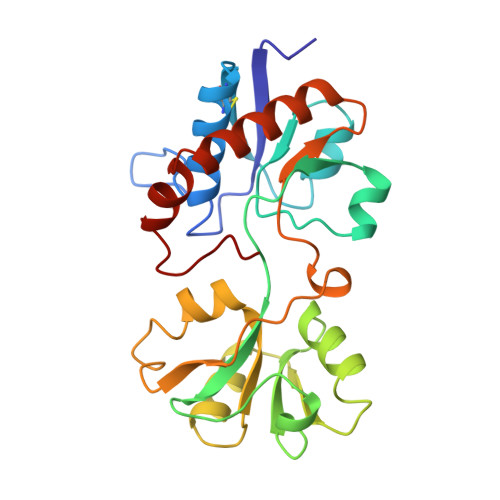Three-dimensional structures of the periplasmic lysine/arginine/ornithine-binding protein with and without a ligand.
Oh, B.H., Pandit, J., Kang, C.H., Nikaido, K., Gokcen, S., Ames, G.F., Kim, S.H.(1993) J Biol Chem 268: 11348-11355
- PubMed: 8496186
- Primary Citation of Related Structures:
1LST, 2LAO - PubMed Abstract:
Many proteins exhibit a large-scale movement of rigid globular domains. Among these, bacterial periplasmic binding proteins involved in substrate transport, or transport and chemotaxis, can be used as prototypes for understanding the mechanism of the movement. Such movements have been found to be associated with specific functions, such as substrate binding, catalysis, and recognition by other biomolecules. We have determined the three-dimensional structures of the lysine/arginine/ornithine-binding protein (LAO) from Salmonella typhimurium with and without lysine by x-ray crystallographic methods at 1.8- and 1.9-A resolution, respectively. The structures are composed of two lobes held together by two short connecting strands. The two lobes are far apart in the unliganded structure, but in contact with each other in the lysine-liganded structure. The large movement of the lobes is a consequence of a 52 degrees rotation of a single backbone torsion angle in the first connecting strand and of distributed smaller changes of three backbone torsion angles of the second connecting strand. The absence of contact between the lysine and the connecting strands suggests that the ligand does not induce the conformational change directly. We instead propose that the unliganded protein undergoes a dynamic change between an "open" and a "closed" conformation and that the role of the ligand is to stabilize the closed conformation. We discuss the nature of a surface area which might be recognized by the membrane-bound complex of these amino acids transport systems.
Organizational Affiliation:
Department of Chemistry, Lawrence Berkeley Laboratory, University of California, Berkeley 94720.














